Concept and creative process
Title sequence for 'The Life & Loves of a She-Devil', a drama serial based on the dark story of a rejected, plain woman who sought revenge on her husband's beautiful lover by appropriating her rival's exact face and body image by means of cosmetic surgery. The title sequence depicts the different stages of the facial transformation of the she-devil, set in a CGI cabalistic evil eye symbol against a background of the elements of air, earth, fire and water. The separate components of the composition - still photography, specially shot film footage, the computer generated evil eye and lettering, and the motion control rostrum camera work were combined, using a digital image manipulation system pioneered pioneered by BBC engineers for graphic design in the pre-Quantel Henry era. This enabled designers to work on video with the same degree of frame accuracy that they were accustomed to when working on 35mm film.
Post-Production - Peter Willis and Malcolm Dalton, BBC Video Rostrum Unit.
Computer Animation - Ian Bird at Electric Image.
Designer/Director - Michael Graham-Smith.
Nominated for a BAFTA craft award 1986.
More Information
The Life and Loves of a She-Devil prop designs
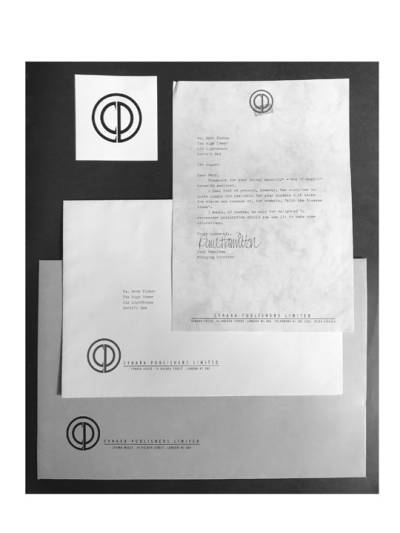
Cynara Publishers stationery props designed by Christine Buttner (Green)
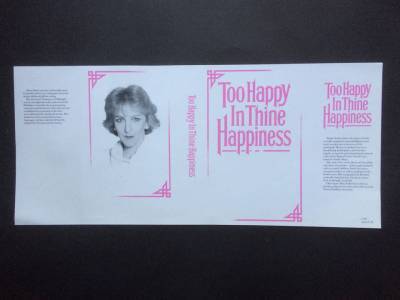
Mary Fisher book jacket prop designed by Christine Buttner (Green) 1
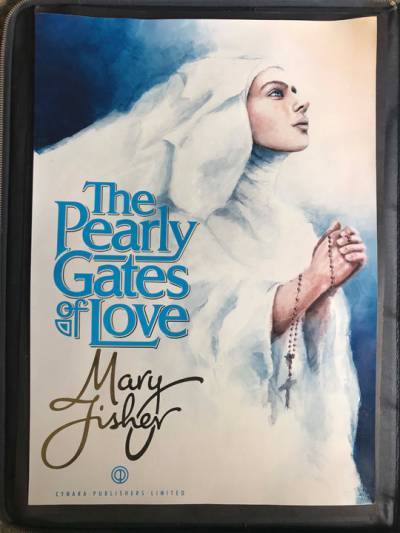
Mary Fisher book jacket prop designed by Christine Buttner (Green) 2
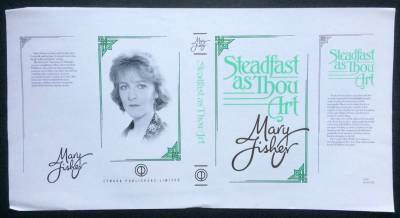
Mary Fisher book jacket prop designed by Christine Buttner (Green) 3

Mary Fisher book jacket prop designed by Christine Buttner (Green) 4
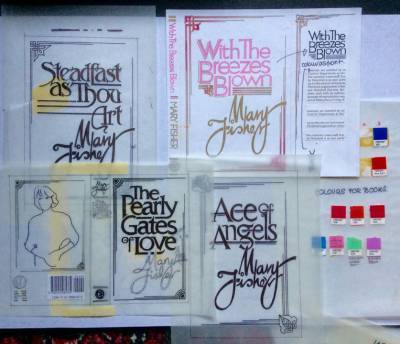
Mary Fisher book jacket props roughs designed by Christine Buttner (Green)
BBC Video Rostrum Unit
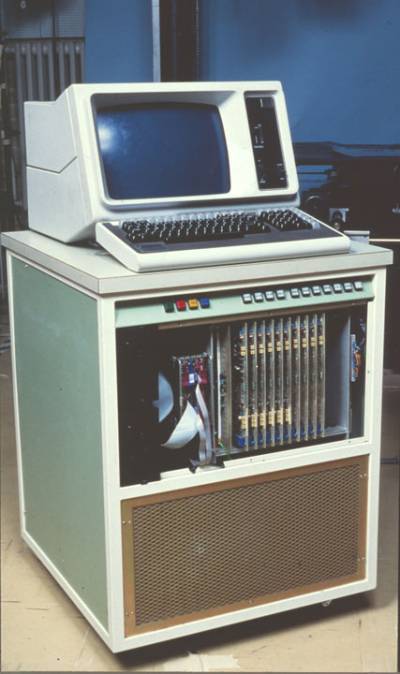
Mark Roberts motion control unit that drove the video rostrum camera input. This was adapted as a collaboration with the BBC to upgrade his Animation Rostrum motion control computer to real time precision motion control, whereby complex moves could be programmed in and repeated with total frame accuracy
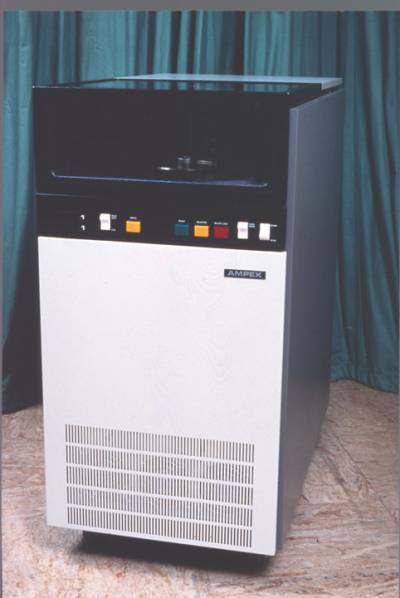
The master digital IBM frame store. This stored real time digital images onto removable disk packs. The unit stored the TV images produced by the BBC Research Department digital image processing system. It stored a "massive" 32 seconds of real time video. This meant that it could store 10 secs of shot "A" plus 10 secs of shot "B" with enough space left for the resultant A+B mix. In this way sequences could be built up in 10 second sections. The new technology was light years away from what is possible nowadays, but it was at the cutting edge of digital image processing in its day and represented the beginnings of a digital revolution that has subsequently changed the way post-production is created
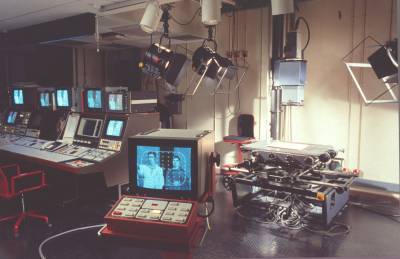
General shot of the Video Rostrum Studio, showing the main control panel (left of shot), and the remote rostrum operating stand (centre), with the Nielson-Hordell high-speed animation stand (centre right) and the lighting rig
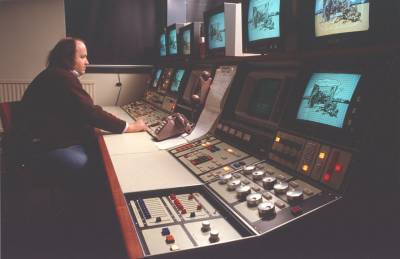
The master control and operating desk with cameraman Peter Willis at the controls. The front third was devoted to the positioning and programming of the rostrum, plus a small lighting desk. In the centre were the controls for the digital frame store. This section handled the combination of shots and the generation of the graphic sequences which were then played out onto tape. The end section held the controls for the Ampex VPR2 tape machine
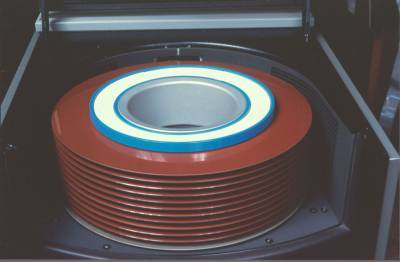
The disc pack used for storing the digital images. These packs could be stored complete with the image data, enabling programme sequences to be updated on a weekly basis
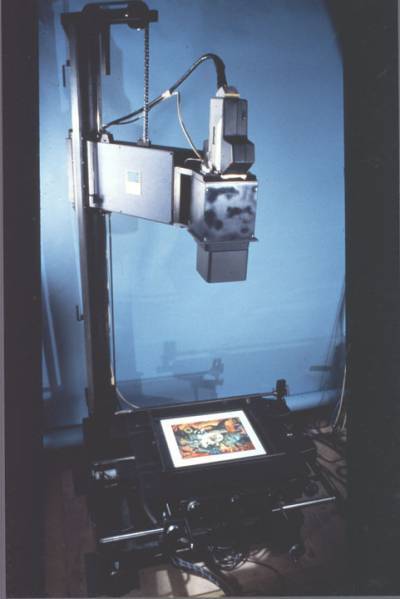
The Nielson-Hordell high speed Rostrum Camera Stand. It had 4 axes of movement plus motorised peg bars. It carried a lightweight Link studio camera, fitted with a bespoke Schneider-Kreuznach TV zoom lens, adapted for control by the Mark Roberts computer
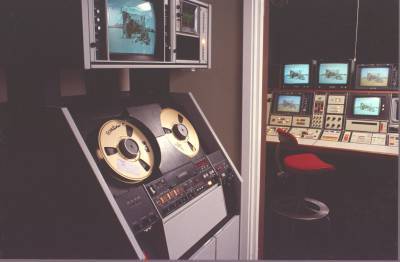
The Ampex VPR2 tape machine used to play out the finished sequences This was located, along with the Digital frame store, in an adjacent air-conditioned equipment room
The BBC Video Rostrum Unit was realised with the collaboration of:
John Aston - Graphic Design Manager.
John Cook - Senior Designer, BBC Graphic Design Department.
Dave Kirby and Mike Kroll - BBC Research Department, Kingswood Warren.
Mike Wolf - BBC Special Projects.
Mark Roberts - Mark Roberts Motion Control.
Peter Willis and Malcolm Dalton - BBC Video Rostrum Unit.
